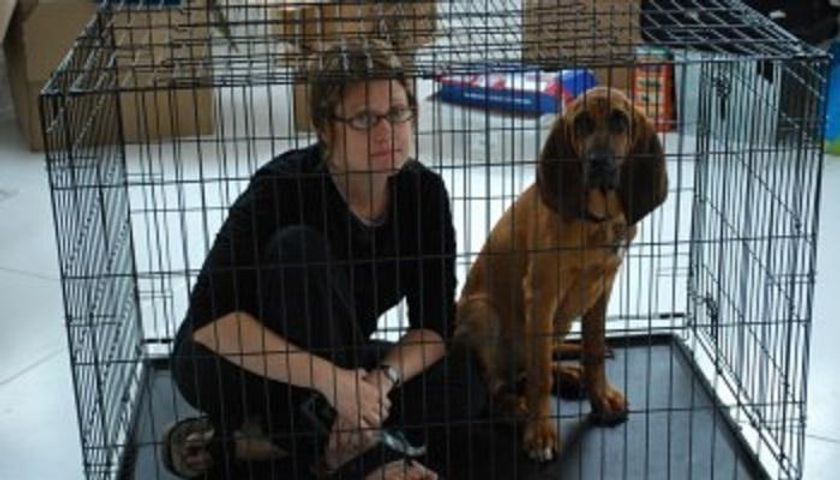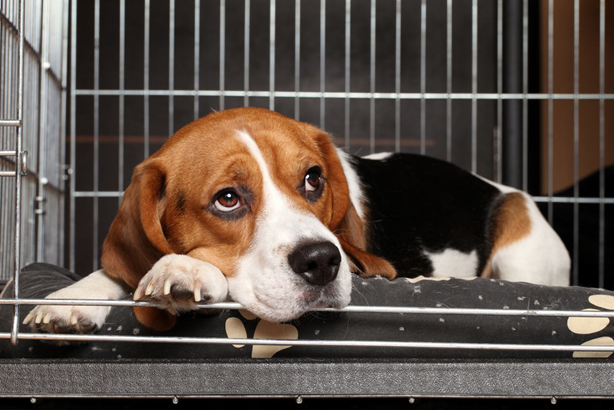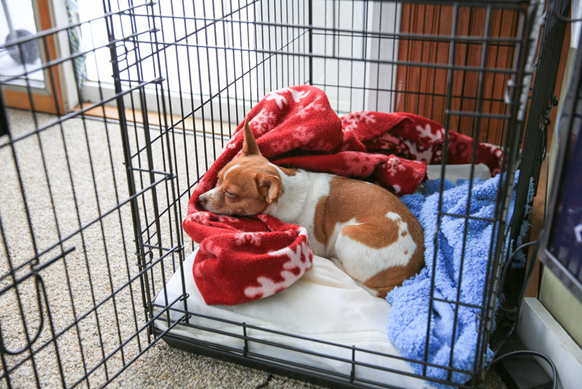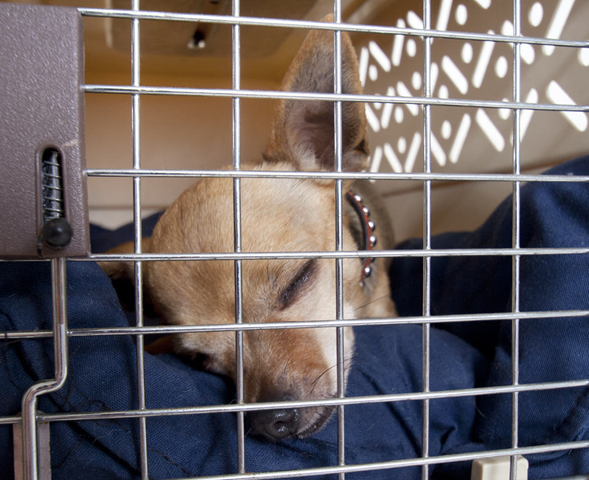
BY JAMIE
This week’s post with celebrity pet trainer Harrison Forbes is all about crate training.
Crate training is popular among many pet parents- some love it and some love to hate it.
There is lots of misinformation in the public about crate training- lots of myths.
Crate training can be very comforting to many dogs. It satisfies their natural instinct to find a safe den to sleep in, out of reach of predators. But when crate training is approached by humans in a different manner, things get confusing for the dog.
The number one rule for crate training is:
Never use a crate as punishment.

Let’s look at how many crate training experiences happen from a dog’s perspective:
The dog does something deemed unacceptable in the human world, like chew up the couch leg or pee on the floor. It’s not really a big deal to the dog, but it makes the humans upset. A pet parent gets angry, grabs the dog by the collar, drags him into another room, shoves the dog forcibly in a crate and yells at him for whatever he did that prompted confinement to the crate. The dog usually doesn’t know why he’s being yelled at, he just knows his caregiver is angry at him and makes him go into this box and be separated from the rest of the family. This box must be a very, very bad place. The dog has a desire to find a safe place to wait out the fury of the humans- anywhere but this bad box.
This scenario makes the crate a bad experience for the dog when it’s supposed to be a safe place. These negative feelings override the need to have a den for the dog.
Crates Help Anxious Dogs
Dogs with anxiety issues sleep better in a crate instead of out in the middle of the floor. They are very vulnerable out in the open. A dog’s instincts kick in at bedtime, they circle to flatten grass to make a comfy bed. They carefully choose a place to sleep where they feel safe, and can spot potential dangers before they arrive.
Here’s where we need to rewire the human thought process. Crates can make your life better if you introduce it properly to the dog and make good associations for him regarding crate training.

Crates are a home that goes with the dog on vacation. It becomes a mobile home and a source of comfort no matter where he goes. And for many dogs, a crate loaded in the back of the car means adventure is right around the corner with all the comforts of home.
This is why it’s so important to never use a crate as punishment when angry, tense, or hostile. Always treat it as a safe place of comfort for your dog.
To help a dog adjust to spending time in his crate, let your dog get hungry and feed them in crate for several days. Over time, food association helps the crate become a positive thing. If you put him in the crate while you’re gone, let him out as soon as you get back and do something fun immediately so he learns to make more positive associations.
You can create a new norm for any dog in 10-14 days, even if the dog’s had negative crate experiences. A dog who already has bad experiences with a crate may take a little longer. Be patient with him.
Crate Training Dos and Don’ts
Put crate in a quiet place. The more room you give an anxious dog to pace, the more anxious they will become. Restricting movement has a calming affect for anxious dogs.
If you have an anxious dog, open wire crates won’t help your dog feel less vulnerable- cover his crate on three ends so the dog doesn’t feel exposed, or purchase an airline crate with closed sides. On average, dogs sleep more than half the day away. The crate becomes a safe place to nap for your dog.

Don’t leave a puppy in the crate for too long. Keeping a puppy in a crate for hours on end helps with housetraining because he won’t want to go where he sleeps, but it can create negative associations for the pup as well if he’s left in the crate for too long.
Watch the stress level of the dog. Let them fuss for a minute or two then let him out. Open the door when he calms down, not when he’s making a racket. Give a noisy dog 30 minutes plus to calm down before letting him out. Don’t engage the dog, just walk in and let him out and walk out. Of the room. Any attention you give him during the interaction will teach him that when he barks and carries on, he gets his way and will be let out to play. If you make this mistake, you’ll have to create a new habit for your dog over the next 10-14 days.
Active dogs should be put in a crate after they’ve exercised and want to sleep.
Dogs need water if they’re going to be in the crate for long periods of time but not too much since there’s no place to go pee while in there. Four to five ounces of water should be sufficient as long as the dog is not too hot. Never leave a dog in a crate in a hot environment.
Keep dogs in crates in a temperature controlled environment at all times.
If your dog is stressed, move his crate and see if moving away from people helps calm him. Some dogs like to see people from the door of the crate, others prefer to be out of sight.
Choose a crate that’s big enough for the dog to lay in several positions during his time in his den. You can place chew toys, kongs, and treats in the crate with him to help him to occupy his time.
About the Business
Have a question? Ask the experts!
Send your question

